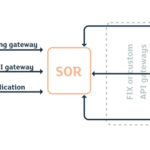In the dynamic realm of financial markets, liquidity is the lifeblood that fuels transactions and enables assets to change hands efficiently. Two crucial entities that contribute significantly to maintaining liquidity are market makers and liquidity providers. While these terms are often used interchangeably, they encompass distinct roles and functions. This comprehensive guide aims to demystify the roles and impact of liquidity providers in the market, shed light on the differences between market makers and liquidity providers, explore their strategies, benefits, and drawbacks, and provide insights into how they collectively shape the financial landscape.
Understanding Liquidity Providers
Liquidity refers to the ease with which an asset can be bought or sold in a market without causing significant price fluctuations. It is a fundamental aspect of financial markets, as it allows traders and investors to enter and exit positions seamlessly. Liquidity providers play a pivotal role in ensuring that assets remain tradable, even in volatile markets.
Liquidity providers are entities or individuals that commit to buying or selling assets in a market, thereby contributing to the market’s overall liquidity. They stand ready to transact at prevailing market prices, facilitating trades and maintaining market efficiency.
Efficient markets are characterized by the ability to execute orders quickly, at competitive prices, and without causing substantial price movements. Liquidity providers are instrumental in achieving this efficiency by ensuring that there are counterparties available for trades, even during periods of heightened volatility.
Market Makers vs. Liquidity Providers
What are Market Makers?
A market maker is a type of liquidity provider that actively participates in a market by continuously quoting buy and sell prices for specific assets. They commit to providing liquidity by standing ready to buy from sellers or sell to buyers at their quoted prices. Market makers often profit from the bid-ask spread—the difference between the prices at which they are willing to buy and sell.
What are Liquidity Providers?
Liquidity providers, on the other hand, encompass a broader category that includes entities or individuals willing to buy or sell assets in the market, not necessarily as a continuous market-making activity. While market makers are a subset of liquidity providers, the latter can encompass algorithmic traders, high-frequency traders, institutions, and individuals who provide liquidity when opportunities arise.
Key Differences Between Market Makers and Liquidity Providers
- Continuous Quoting: Market makers continuously quote buy and sell prices, while liquidity providers may enter the market opportunistically.
- Profit Mechanism: Market makers profit from bid-ask spreads, while liquidity providers may seek profit through various strategies, including arbitrage.
- Activity Level: Market makers are highly active in specific markets, while liquidity providers may operate across a broader range of assets and markets.
- Regulatory Considerations: Market makers often face more stringent regulatory requirements due to their continuous market presence.
Strategies Employed by Liquidity Providers
- Passive vs. Active Liquidity Provision Liquidity providers can adopt either passive or active strategies. Passive providers offer liquidity by placing orders on the order book, and waiting for counterparties to trade at their posted prices. Active providers, on the other hand, seek out trading opportunities by responding to existing market orders.
- Risk Management Strategies Effective risk management is crucial for liquidity providers. They often employ strategies to hedge their exposure, such as delta hedging in options markets or maintaining a diversified portfolio of assets to offset potential losses.
- Impact on Bid-Ask Spreads Liquidity providers can have a significant impact on bid-ask spreads. Their presence in a market reduces the spread, making it more cost-effective for traders to execute orders. This narrower spread benefits all market participants.
Learn How to use trend and momentum indicators to build a trading strategy in this blog Comprehensive Guide to Trading with Trend Analysis with Python
Benefits of Liquidity Providers
- Enhanced Market Efficiency Liquidity providers enhance market efficiency by ensuring that there are readily available counterparties for trades. This results in faster order execution and reduced price fluctuations.
- Reduced Bid-Ask Spreads The active participation of liquidity providers narrows bid-ask spreads, reducing transaction costs for traders and investors.
- Lower Transaction Costs Liquidity providers help reduce transaction costs by offering competitive prices and absorbing smaller price movements, minimizing slippage.
- Risk Mitigation In addition to facilitating trades, liquidity providers play a crucial role in risk mitigation. Their presence can stabilize markets during periods of volatility, preventing extreme price swings.
Drawbacks and Challenges
- Risk of Losses Liquidity providers face the risk of losses, especially when market conditions change rapidly. Sudden price movements or unexpected events can lead to significant losses if risk management strategies are not effectively employed.
- Competition and Market Fragmentation Competition among liquidity providers can result in lower profitability and thinner margins. Additionally, the presence of multiple liquidity providers can lead to market fragmentation, making it challenging to find the best available prices.
- Regulatory Scrutiny Liquidity providers often operate in highly regulated environments, and compliance with market regulations is essential. Regulatory scrutiny can impact their strategies and operations.
- Technological Infrastructure Maintaining robust technological infrastructure is crucial for liquidity providers. High-speed trading, algorithmic strategies, and low-latency connectivity are essential for staying competitive.
Real-World Applications of Liquidity Providers
Liquidity providers are active in various markets and asset classes, playing a vital role in maintaining liquidity and market stability:
- Equity Markets: In equity markets, liquidity providers, including market makers, ensure that stocks can be bought and sold efficiently. They are particularly active in high-volume and heavily traded stocks.
- Foreign Exchange (Forex): In the forex market, liquidity providers, often referred to as liquidity pools or LPs, offer competitive bids and ask prices for currency pairs. Forex liquidity providers ensure the availability of counterparties for currency trades.
- Cryptocurrency Markets: Cryptocurrency exchanges rely on liquidity providers to ensure that a wide range of cryptocurrencies can be traded seamlessly. These providers play a crucial role in the price discovery process.
- Commodity Trading: Commodity markets, including those for energy, metals, and agricultural products, benefit from liquidity providers who ensure that commodities can be bought and sold efficiently.
- Fixed-Income Markets: Liquidity providers in fixed-income markets help maintain liquidity in bonds and other debt instruments, ensuring that investors can trade these assets when needed.
For downloading this Juypter Notebook , you can follow this repo Econometrics_for_Quants
Conclusion
Liquidity providers, including market makers, algorithmic traders, and high-frequency trading firms, are the backbone of liquid financial markets. They play a critical role in ensuring that assets can be bought and sold efficiently, facilitating the functioning of global financial systems.
By providing competitive bid-ask spreads, reducing transaction costs, and enhancing market efficiency, liquidity providers benefit a wide range of market participants, from retail traders to institutional investors. While they face challenges such as risk management and regulatory compliance, liquidity providers will continue to evolve, adapt, and shape the future of financial markets.



